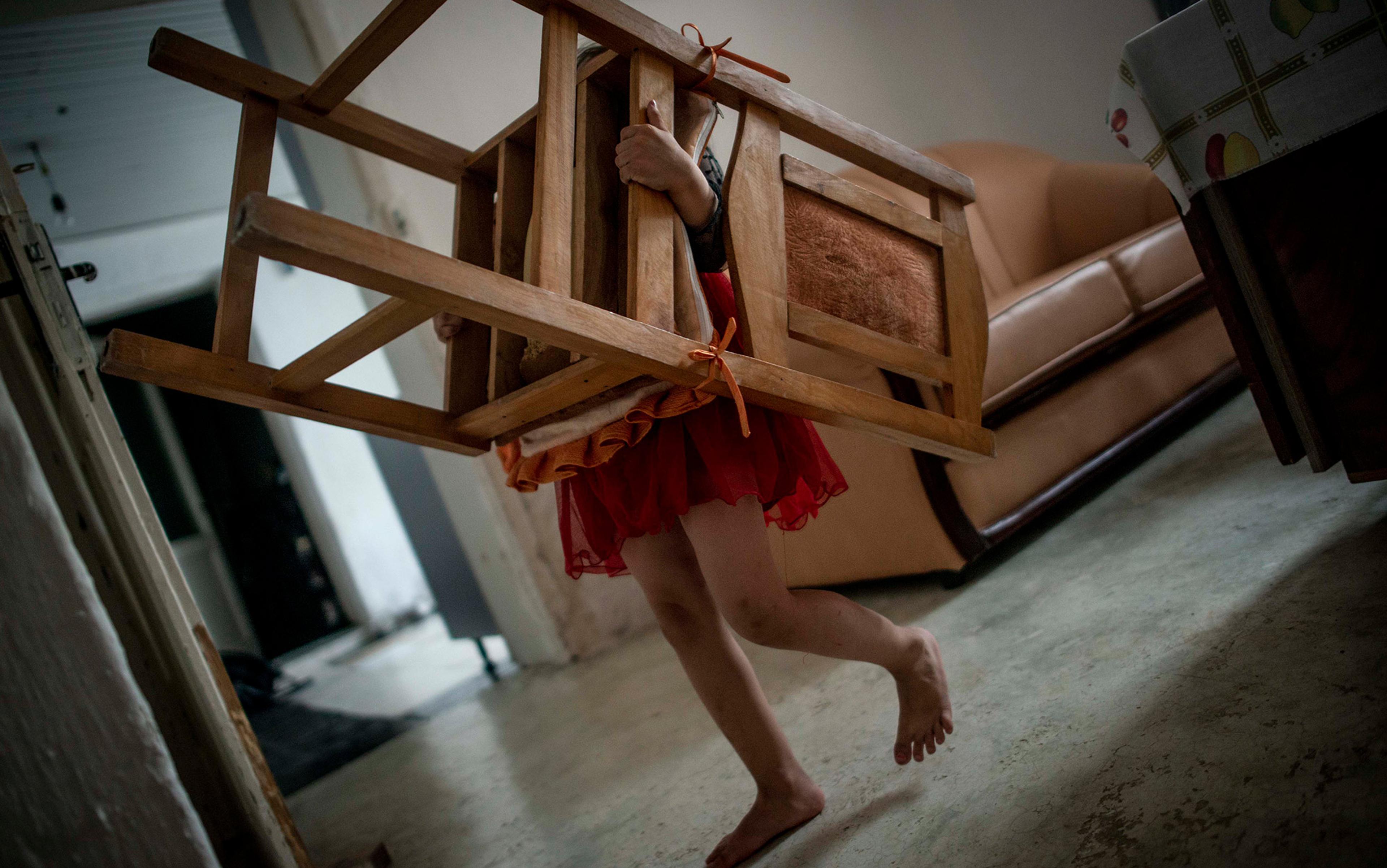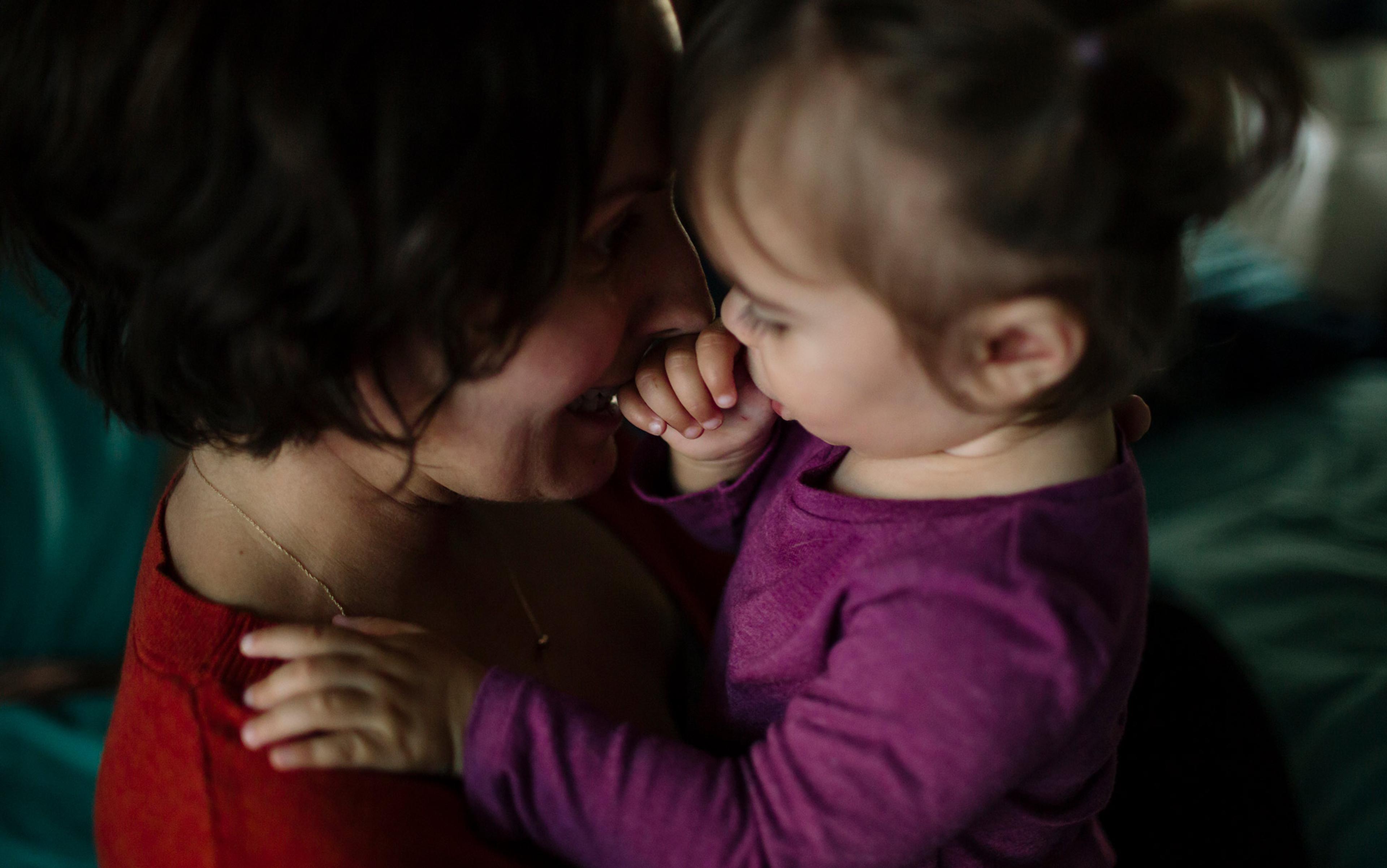As a psychologist in private practice during the early 1980s, I began to establish a specialty in treating survivors of longterm child abuse. One regular source of clients was an agency that helped individuals with a work history hampered by medical or psychological impairments. Some of these people were later authorised to enter therapy with me, but my initial charge was to conduct a comprehensive psychological evaluation with each of them, at the core of which was a detailed interview covering their life history from childhood onward.
I found the preponderance of these clients’ accounts astounding and disturbing. Although varied in detail, they consistently diverged from the prevailing assumptions about what childhood was like for most. One person was accorded ‘independence’ at age four to wander the big city streets unaccompanied by an adult. Another learned toothbrushing for the first time as an early teenager, after escaping from their parental home to live with much older intravenous-drug addicts. Yet another created a ‘game’ called ‘picnic’, supplying the blanket while friends provided the food – that way surreptitiously satisfying the hunger frequently caused by parents who ate first, allotting their child only leftover scraps. Some clients had almost no friends at all because their households were so chaotic and conflict-ridden that they were too embarrassed to let other children enter and see how their families behaved.
It’s crucial to understand that these experiences are not instances of trauma. They do, however, illustrate the circumstances that, with remarkable frequency, accompany another phenomenon called prolonged child abuse (PCA) trauma: growing up in a household where many of the most fundamental conditions needed for adaptive child development are sorely lacking.
As an undergraduate majoring in psychology, my primary faculty mentors had been researchers in developmental psychology, the study of how people grow in competence and complexity through the lifespan. Therefore, what stood out to me was that the psychologically impoverished circumstances conveyed in the assessment interviews – and the relative absence of more salutary ones – were in large part responsible for these clients’ psychological problems and their work limitations. Although I recognised the alarming instances of traumatic child abuse depicted by my clients – beatings, sexual molestation, humiliating treatment – I saw them as ‘landmarks’ within a broader terrain of developmental deprivation and hardship. I came to see incidents of overt abuse as particularly dramatic moments embedded in a broader, unrelentingly detrimental developmental narrative.
It might come as a surprise to many in 2020 but, prior to 1980, the notion that traumatic experience alone could be a major source of psychological difficulty was barely recognised. This state of affairs began to shift in 1980 with the publication of the third edition of the DSM (the Diagnostic and Statistical Manual of Mental Disorders, the standard volume of psychiatric classifications in the United States), in which the diagnosis of post-traumatic stress disorder (PTSD) first appeared. But recognition was far from immediate. At first, awareness of trauma was siloed into separate types of overwhelming events, such as ‘delayed stress response syndromes in Vietnam veterans’, ‘rape trauma syndrome’ and ‘battered woman syndrome’. It became clear that these distinct events could lead to essentially identical psychological consequences only after the effects appeared under the designation ‘PTSD’ in the DSM.
Increased awareness of PTSD illuminated the plight of my PCA clients, a group whose unsettling histories of deprivation were punctuated by heightened incidents of abuse. My clients had two things working against them. First was abuse trauma, consisting of experiences damaging to psychological adjustment. Second was the surrounding context of deprivation – lack of the affection, attention, structure and guidance supportive of psychological development. The dramatic nature of trauma readily captures the attention of observers. The much more subtle (but absolutely detrimental) effects of developmental deprivation are not as easily noticed.
In 1990, after several years’ experience working with trauma survivors in private practice, I established a treatment and research training clinic, the Trauma Resolution and Integration Program (TRIP) at Nova Southern University in Florida, staffed entirely by doctoral-level psychology trainees. Although we serve survivors of all forms of trauma, the vast majority of individuals seeking services at TRIP, in addition to other traumas they might have experienced, report a history of PCA.
It didn’t take long for us to conclude that standard treatments for PTSD, in which survivors revisit the traumatic events that they have endured, were poorly suited for PCA survivors. It is not unusual for anyone engaging in this form of treatment to experience a temporary increase in distress upon confronting the very same incidents that led to their trauma in the first place. For survivors of more circumscribed traumatic experiences, these reactions subside fairly quickly, traumatic responses diminish, and the procedure culminates in a lasting reduction in, or complete elimination of, their PTSD symptoms.
What we observed at TRIP was that the outcome for PCA survivors was very different. If led to confront early in treatment the traumatic events they had endured, they frequently became so agitated that their symptoms rapidly rose in intensity. If their therapist persisted in encouraging them to focus on traumatic material despite this decline in adjustment, the result was likely to be a marked, longterm reduction in their level of functioning.
I have encountered PCA survivors who were let go from their jobs or had to settle for a much less well-paying form of employment due to premature entry into trauma-focused treatment. Some became so impaired that they had no alternative but to go on disability benefits, even though previously they had been high-earning professionals. Some lapsed or relapsed into active substance abuse or other forms of addictive or compulsive behaviour, a common way for trauma survivors to frantically attempt to manage or suppress their trauma-related symptoms. Still others were so overwhelmed by hyper-vivid flashbacks that they fell into a state of unresponsiveness or slipped into dissociative mental states during trauma-focused therapy sessions. These reactions not only made them temporarily inaccessible to the therapist’s attempts to intervene but, in some instances, led them to leave treatment entirely.
Our conclusion was that the developmental deprivation they had been subjected to during their growing-up years left them without the ability to productively confront their history of abuse trauma. Due to what they had missed out on in their formative years, they were prone to experience the ordinary stressors of daily living as overwhelming. Returning to the crushing anguish of a past mired in abuse trauma exceeded their capacity to cope.
Eventually, as a temporary measure, we had our patients take the lead in therapy by addressing whatever seemed relevant and important to them. What they tended to focus on was the same pervasive atmosphere of developmental deprivation – lack of affection, attention, structure and guidance – that my private practice clients had described in the early 1980s. In the end, this work led to an alternative therapy – what I call contextual trauma therapy – that was able to help those enduring the legacy of a childhood of chronic emotional deprivation embedded with overt instances of maltreatment throughout.
Around the time that we were beginning the work with our clients that led to the formulation of contextual trauma therapy, approximately a decade after the official introduction of the PTSD diagnosis, a book by the psychiatrist Judith Herman was published that radically expanded the conception of trauma and its psychological consequences. Still regarded as essential reading in the field, Trauma and Recovery (1992) contained a proposal for ‘a new diagnosis’, distinct from PTSD, for trauma resulting from interpersonal violence occurring over a protracted period of time: ‘complex PTSD’, or C-PTSD.
Research has now firmly established that a broad range of symptom patterns beyond PTSD, including anxiety, depression, substance abuse, dissociation and even psychosis, may be elevated in individuals with a protracted history of trauma. Consistent with these findings, Herman suggested that C-PTSD is comprised of a much more fundamental constellation of psychological difficulties than PTSD, encompassing broad areas of impairment in interpersonal, cognitive and emotional functioning.
C-PTSD has long been an ‘orphan’ diagnosis without the stamp of legitimacy conferred by inclusion in the DSM. It has been the subject of controversy between two contingents of trauma specialists. One contends that C-PTSD can be effectively treated in precisely the same way as PTSD, via focus on the traumatic event until it no longer elicits symptoms. Therefore, they argue that a separate C-PTSD diagnosis is unwarranted.
Childhood neglect and household dysfunction hinder social and cognitive development
Another faction maintains that C-PTSD differs in essential respects from PTSD and requires a distinct approach to treatment: a period of extensive ‘stabilisation’ prior to confronting the traumatic history. This preliminary phase of treatment is aimed at reducing stress-related symptoms and bolstering coping capacities so that, when traumatic events are subsequently addressed directly, the outcome is beneficial rather than overpowering and debilitating.
The position of the latter group, corroborated by our own experiences at TRIP, forms the backdrop for construction of a C-PTSD treatment that we call contextual trauma therapy (CTT). This therapeutic framework has been corroborated by two strands of research appearing recently in the scientific literature.
One set of studies strongly supports C-PTSD as a diagnosis distinct from PTSD, resulting in its inclusion in the 11th and most recent edition of the International Classification of Diseases (2018), a compilation analogous to the DSM and published by the United Nations World Health Organization. In addition to the symptoms of PTSD, including enduring reminders of trauma, the studies revealed three distinct signs of C-PTSD: difficulties managing interpersonal relationships; a compromised ability to control emotional reactions; a negative self-image. This triad of difficulties is referred to in the literature as disturbances in self-organisation (DSO). In fact, the research shows that C-PTSD was more common (in one study, three times more common) than PTSD alone.
The second line of investigation starts with a large-scale study including more than 13,000 participants led by the physician Vincent Felitti in San Diego in 1998. The very title of this article acknowledged the distinction between childhood trauma and its developmental context: ‘childhood abuse and [emphasis added] household dysfunction’. This study identified 10 ‘adverse childhood experiences’, or ACEs, falling into three main categories: psychological, physical and sexual abuse; emotional and physical neglect; and household dysfunction, where a family member was incarcerated, exhibited mental illness, engaged in substance abuse or intimate partner violence, or where parents were separated or divorced. Each of the ACEs was found to substantially increase the risk of any of a broad range of medical diseases and psychological difficulties. The more ACEs in a person’s history, the greater the likelihood of exhibiting these maladies. One of the most powerful findings of the study was that individuals with six or more ACEs in their background had a life expectancy almost 20 years shorter than those with none. Since the age of study participants averaged in the 50s, the findings implied that children’s household environment could impact their physical health and mental wellbeing decades later.
A group of studies conducted by the psychologist Katie McLaughlin at Harvard University and her colleagues examined whether distinct categories of ACEs were related to different outcomes. These investigators identified divergent impacts of abuse on the one hand, and neglect and other forms of household dysfunction on the other. They found that trauma from childhood abuse (‘experiences of threat’) heightens sensitivity and reactivity to perceived danger. By contrast, childhood neglect and household dysfunction (‘experiences of deficit’) hinder social and cognitive development.
My work reinforces and expands these reports. Our findings suggest that developmental limitations from experiences of deficit are the primary source of self-organisation disturbances in C-PTSD. If this is the case, it follows that symptoms of PTSD result from traumatic experience, while symptoms of C-PTSD stem from the combined effects of childhood abuse trauma and growing up in a household characterised by developmental deprivation. It was the latter factor, a developmentally deficient household environment during childhood – ie, the context of PCA – that was so noteworthy to me upon first encountering these clients in the 1980s, and from which contextual trauma therapy derives its name.
Research data collected from PCA survivors at our clinic indicates that, whether their abuse was perpetrated by family members, by people outside the family or by members of both groups, the characteristics they ascribed to the families they grew up in were remarkably similar. These families didn’t provide the emotional support, encouragement of critical thinking or acquisition of adaptive capacities needed for effective, autonomous adult functioning, a pattern likely to foster intense unmet needs for affection and attention, an eagerness to please, and a restricted capacity for assertiveness.
We help our clients develop the abilities needed to feel better and function better in the present
Whether an abuser commits intimate partner violence, bullying or other forms of subjugating behaviour, a childhood of deprivation produces an individual with the very qualities sought by perpetrators of interpersonal violence. These characteristics set up PCA survivors as lifelong victims, signalling that efforts at dominating them would be met with little or no resistance and making those reared in these types of environments especially vulnerable to manipulation and abuse. From a contextual perspective, these proclivities probably explain the repeated finding in the research literature that individuals who are maltreated as children are more likely to be victimised by various forms of interpersonal violence in adolescence and adulthood than those who are not.
The developmental deficiencies promoted by this type of family atmosphere offer an explanation for why our clinic’s PCA survivors required a period of stabilisation prior to engaging productively in trauma processing. Their present-day lives were distinguished by the despair, self-denigration, emotional distress and loneliness that come from having arrived at adulthood insufficiently equipped to manage the challenges of daily life, including mastery of effective coping skills. No wonder, then, that immediately diving into confrontation with their traumatic past was overwhelming rather than healing.
Herman advocates that the first phase of treatment aims to stabilise the client. We agree, but add that, in large part, this is accomplished by promoting remedial psychological development and the shoring up of adaptive capacities not only weakened by trauma, but also stunted by developmental deprivation. By fostering effective interactions with others, establishing a mutually trusting, collaborative treatment relationship, and promoting sound reasoning ability guided by logic, the client and the therapist together can construct strategies for mastering coping abilities and other life skills.
In short, initial treatment helps our clients develop the abilities needed to feel better and function better in the present, rather than assuming that they would first need to be directed to revisit their traumatic past to address the root of their distress. We found that, once they had made substantial progress toward expanding their adaptive capacities and living more gratifying and effective lives in the present, trauma processing could be conducted productively without disruptive consequences.
When I first established our clinic, colleagues with expertise in the area warned me that it was foolish and risky to entrust severely traumatised clients to doctoral student therapists with only one previous year of clinical experience under their belts. Similarly, in the early days of the programme, professional staff of the larger clinic system would periodically come across PCA survivors and fret about whether student therapists at our training facility could effectively work with them. Most often, with considerable hesitation but seeing no other alternative, they would refer these clients to us for initial evaluation. Inevitably, the trainee assigned the case would present it at our weekly team meetings and remark: ‘I don’t know what the permanent staff is worried about. This person is a typical TRIP client.’
Eduardo (not his real name), a man in his early 20s, exemplifies the kind of people our clinic works with and the type of course their treatment follows. Born in Cuba, Eduardo is an only child who was seven when he emigrated to the US with his mother. Upon their arrival, they stayed with extended family. During this period, Eduardo was sexually molested by an older cousin living in that house. Eventually, he and his mother moved into their own home. While this spared him continued molestation, living alone with his mother placed a considerable emotional burden on him. Eduardo’s mother was severely depressed and intensely emotionally dependent on him. She attempted suicide several times, and was consequently involuntarily committed to psychiatric hospitals on multiple occasions. Moreover, from a young age, it became clear to him that she often lied to him.
One of the most egregious instances of this pattern of behaviour occurred a few years after they emigrated to the US. Eduardo’s mother told him that his father, who remained in Cuba, had died of a heart attack. Years later, he discovered that his father’s death had been a suicide. His mother was also a hoarder, and the accumulating piles of objects in the home led to ongoing infestations of ticks and fleas. To make matters worse, the house often flooded due to ageing and rusty plumbing, fostering a constant problem with mould. In brief, neither the emotional nor even the physical environment in which Eduardo was reared was one of safety and stability.
As is often the case with PCA survivors, Eduardo simultaneously manifested several severe psychological difficulties. He had a history of extended periods of depression, distorted thinking that at times reached delusional proportions, years of longterm abuse of both marijuana and cocaine, and an intense fear of abandonment by and clinginess towards the women he dated.
Underlying this clinical picture were all the PTSD and self-organisation disturbances typical of C-PTSD. Once in therapy, Eduardo told us that one of his most pressing difficulties was nearly starving himself to the point where he was hospitalised for acute dehydration on several occasions. He was also repeatedly and ragefully cutting himself with a razor, compulsively engaging in unprotected sex in exchange for money and drugs, and relying on substance abuse of such intensity that it stopped him sustaining employment.
In contrast to his previous angry ‘rebelliousness’, he framed his arrest as an ‘opportunity to change things’
Early in treatment, Eduardo’s attendance became erratic due to the interference created by his substance abuse. He also stopped paying his therapy bills because he was using the money allocated for treatment to pay for drugs. Consequently, his therapist explained that treatment would be suspended until full payment was made. Initially, he was furious at his therapist for adopting this position. However, she made it clear to him that once he demonstrated accountability by paying off his outstanding balance with her, he could count on our clinic, as long as he maintained consistent attendance and active participation in treatment.
Eduardo settled his bill within a few weeks and returned to therapy. He also decided to join a support group in the community for men with eating disorders. By the end of his first year of treatment, he was maintaining full-time employment as an office manager for an attorney and was taking drugs only on the weekends.
Since therapists at our clinic are in training, their placement is usually for 12 months, so clients need to switch to a new practitioner once a year. As Eduardo’s year-long treatment with his first TRIP therapist neared an end, he was arrested and convicted for driving while intoxicated and placed on house arrest. However, in marked contrast to his previous angry ‘rebelliousness’ (his word), he framed this occurrence as an ‘opportunity to change things’.
During the following year with his new TRIP practitioner, Eduardo started attending a self-help group for people with substance-abuse problems, transitioned to a new full-time job at another office, and completed his probation without incident. He was no longer engaging in compulsive sexual encounters, formed a network of stable and supportive friends and, although he still becomes incensed at his mother when he catches her lying to him, has improved his relationship with her by establishing limits. Overall, he is considerably less emotionally reactive, markedly less haunted by the traumatic circumstances of his childhood, and much more firmly rooted in a productive and gratifying lifestyle than he was prior to treatment.
As Eduardo’s course of treatment illustrates, the contextual trauma therapy model conceptualises the aim of therapy for survivors of PCA trauma as extending well beyond trauma resolution. Contextual trauma therapy also aspires to equip these clients with the life skills they would have acquired if they’d grown up in more favourable circumstances. It is our conviction, in fact, that treatment for C-PTSD is incomplete if it doesn’t aim to meet both these objectives. As a result of this orientation, we have seen many of our clients not only overcome their trauma-related symptoms, but also appreciably enhance their social adjustment, occupational effectiveness, financial stability and capacity for intimate connection. Once their present-day life is more predictable and productive, they are able to effectively address their traumatic past without risking being overwhelmed by it. In sum, they are enjoying a substantially enriched quality of life, one that almost invariably was beyond their imagining before treatment began.






